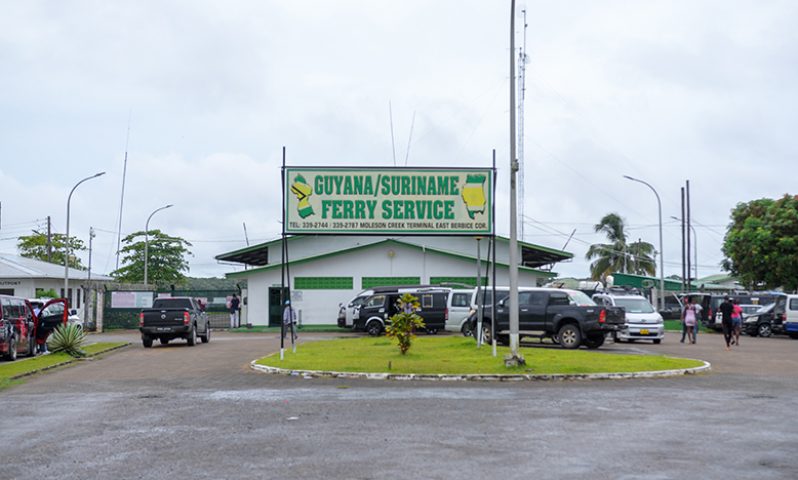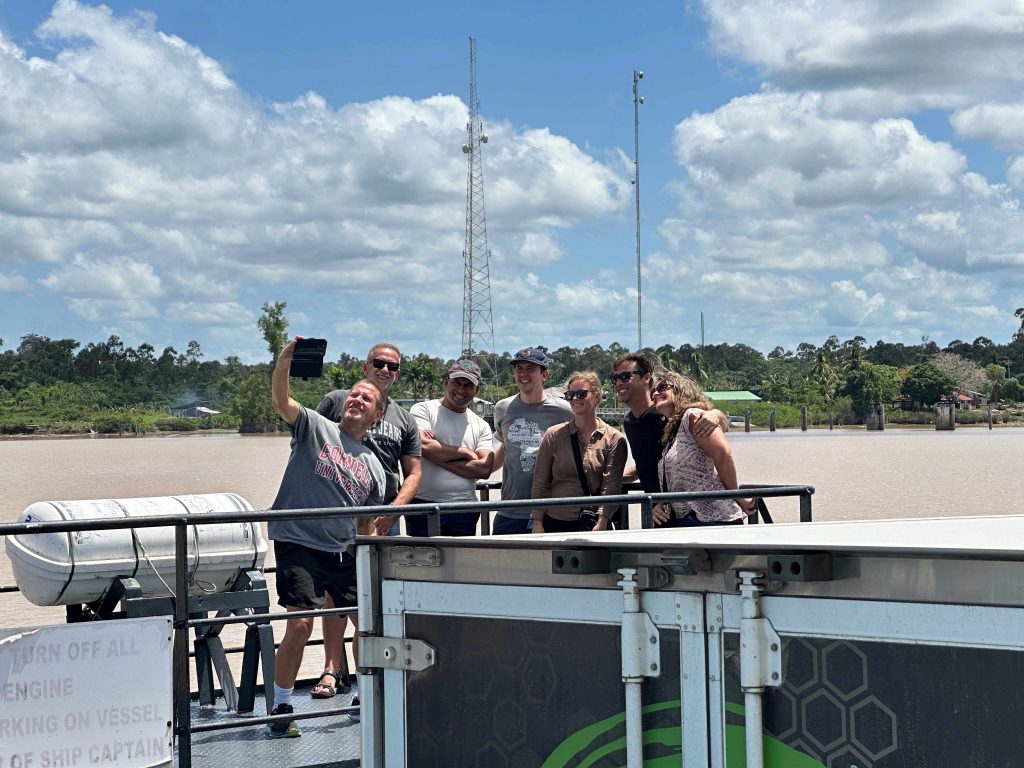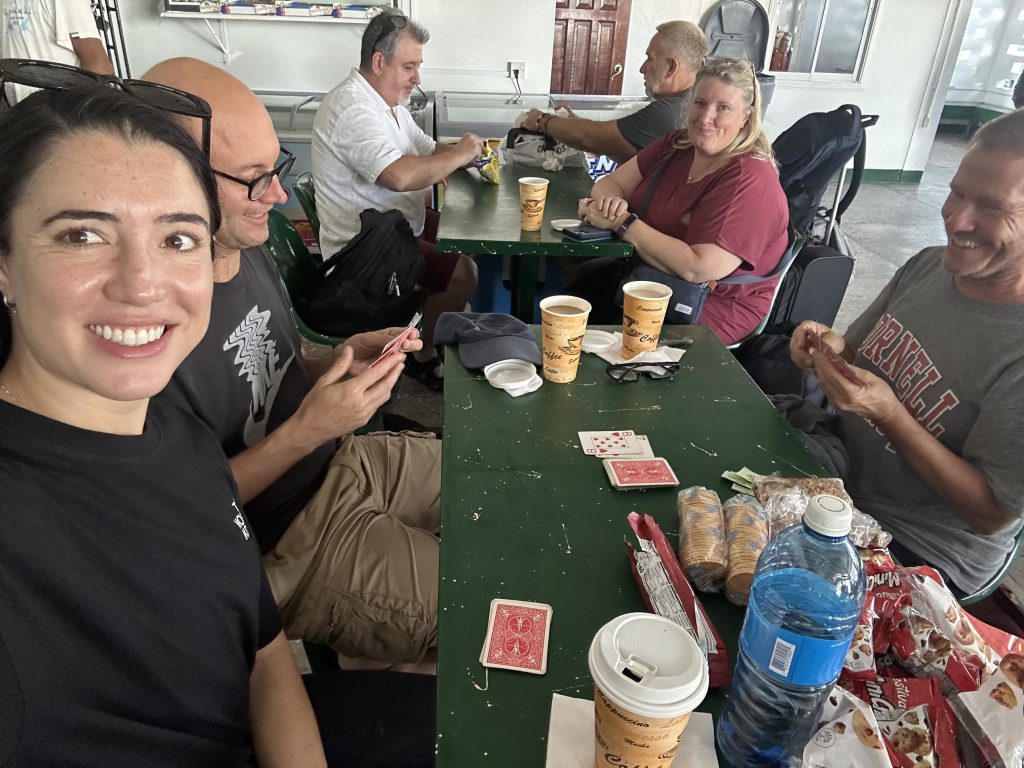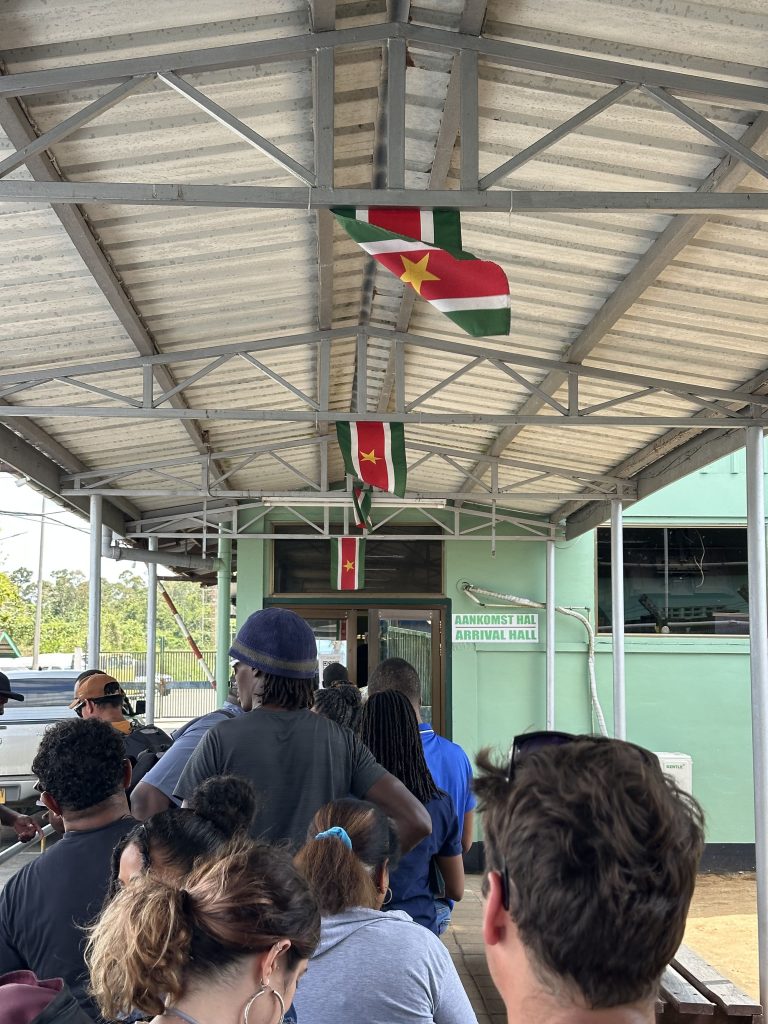Traveling across borders can sometimes feel complicated, but if you’re heading from Guyana to Suriname, it doesn’t have to be stressful. YPT’s been running our Guyanas Tour for years, and we’ve learned a few tricks to make the journey smooth and straightforward.
In this guide, we’ll walk you through everything you need to know about taking the ferry, from tickets and schedules to what to expect at the border. Whether it’s your first time in the region or you’re just looking for some helpful tips, this guide will make your crossing easier and more enjoyable.

Table of Contents
The Guyana – Suriname Border
Crossing from Guyana into Suriname is an experience in itself. The ferry from Moleson Creek to South Drain takes about 45 minutes, moving slowly along the Corentyne River. The ride is calm, giving you time to watch the river and the small communities along its banks.
This stretch of the river has a long history. Back in colonial times, it marked the boundary between British Guiana and Dutch Suriname. Today, the border is quiet and the river looks much the same, but it still plays an important role in local trade and travel, linking the communities on both sides of the river.
It’s not really a tourist spot… at least not yet. Along the way, you can see floating houses resting on the water and small pirogues crossing the river. The river is busy with local activity; people traveling between villages, boats carrying goods, and life quietly moving along the Corentyne.

Getting to Moleson Creek
Most international travellers fly into Cheddi Jagan International Airport (CJIA) in Georgetown, Guyana, which is well connected with flights from the US, Caribbean, and other South American countries.
From Georgetown, the fastest and most convenient way to reach Moleson Creek is by private car. The drive is roughly 4 hours, depending on traffic and road conditions, passing through small towns and rice fields along the way.
If you’re feeling more adventurous, you can take a public minibus. These depart from Stabroek Market or the Transport Hub in Georgetown, usually around 4 a.m., so you can make the ferry. The ride takes about 5 hours and costs roughly GYD$2,500–3,000 (USD$1–1.50) per person. Since buses often wait until full before leaving, it’s best to arrive early.
Crossing the Border from Guyana to Suriname
Aim to be at the ferry terminal by 8:00 a.m., because there is only one regular ferry per day, departing at 10:30 a.m. This gives you enough time to purchase your ticket and clear Guyana’s exit immigration.
Important: The exit form for Guyana needs to be filled out when you enter the country as well as when you leave. You can fill it out online here: https://ed.gpf.gov.gy/#/.
The ferry ticket costs about USD$20 per passenger, and you can typically pay in Guyanese dollars (GYD) or US dollars (USD), cash only. Make sure to have your yellow fever certificate, as this is often requested.
There is a waiting area at the terminal where you can grab snacks, coffee, or a last-minute rum. When the ferry arrives, cars board first, then passengers. It’s not a huge ferry, so arriving early is crucial; if you miss it, the next one departs the following day.

When you arrive in Suriname, you’ll need to show your passport. Most nationalities do not require a visa, but there is an entry fee of USD$58, which must be paid and confirmed before crossing: https://suriname.vfsevisa.com/suriname/online/home/index.
All travellers are also required to complete Suriname’s digital Immigration and Customs Form (ICF) up to three days before arrival: https://icf.sr/.
From South Drain to Paramaribo
Once you land at South Drain and complete entry immigration, you’ll step into a small border town. From here, your next leg is roughly 4 hours to Paramaribo.
Shared minibuses depart from near the border (look for signs to “Paramaribo” or ask at the terminal) and typically cost around USD$35. It’s best to board soon after arriving, as waiting too long can leave you with fewer options.
Pro tip: When disembarking from the ferry, try to be among the first off; the line can get long as everyone leaves at the same time.

Conclusion
Crossing a land border is always an adventure, especially in countries where infrastructure is not what you might expect. Public transport can be scarce and unreliable, and entry/exit procedures can take longer than anticipated.
The advice here is simple: get there early, be prepared for challenges, and allow extra time.
Or, for the smoothest experience, join our Guyanas Tour, where YPT will take care of all the logistics for you.





